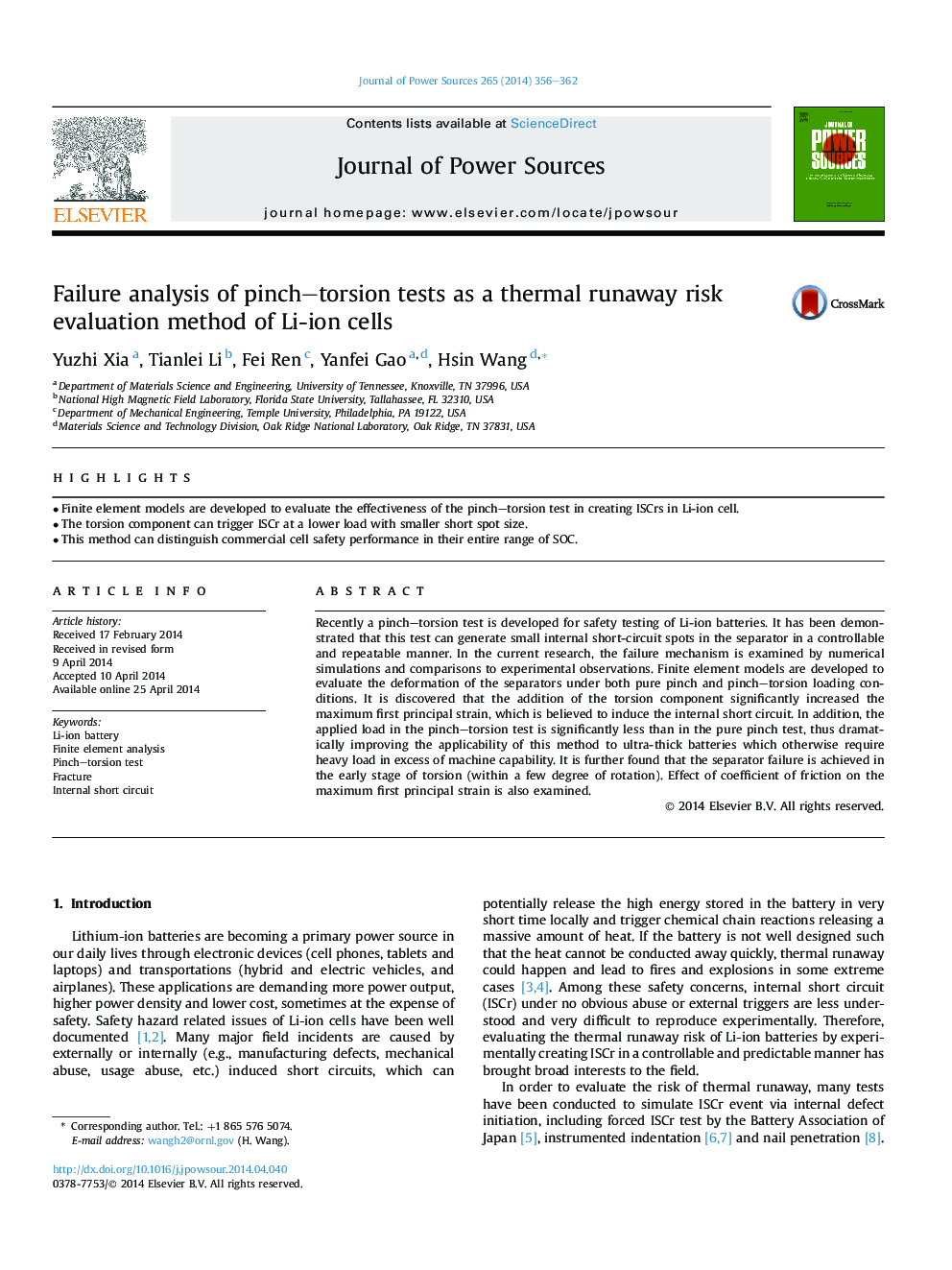| Article ID | Journal | Published Year | Pages | File Type |
|---|---|---|---|---|
| 1284065 | Journal of Power Sources | 2014 | 7 Pages |
•Finite element models are developed to evaluate the effectiveness of the pinch–torsion test in creating ISCrs in Li-ion cell.•The torsion component can trigger ISCr at a lower load with smaller short spot size.•This method can distinguish commercial cell safety performance in their entire range of SOC.
Recently a pinch–torsion test is developed for safety testing of Li-ion batteries. It has been demonstrated that this test can generate small internal short-circuit spots in the separator in a controllable and repeatable manner. In the current research, the failure mechanism is examined by numerical simulations and comparisons to experimental observations. Finite element models are developed to evaluate the deformation of the separators under both pure pinch and pinch–torsion loading conditions. It is discovered that the addition of the torsion component significantly increased the maximum first principal strain, which is believed to induce the internal short circuit. In addition, the applied load in the pinch–torsion test is significantly less than in the pure pinch test, thus dramatically improving the applicability of this method to ultra-thick batteries which otherwise require heavy load in excess of machine capability. It is further found that the separator failure is achieved in the early stage of torsion (within a few degree of rotation). Effect of coefficient of friction on the maximum first principal strain is also examined.
